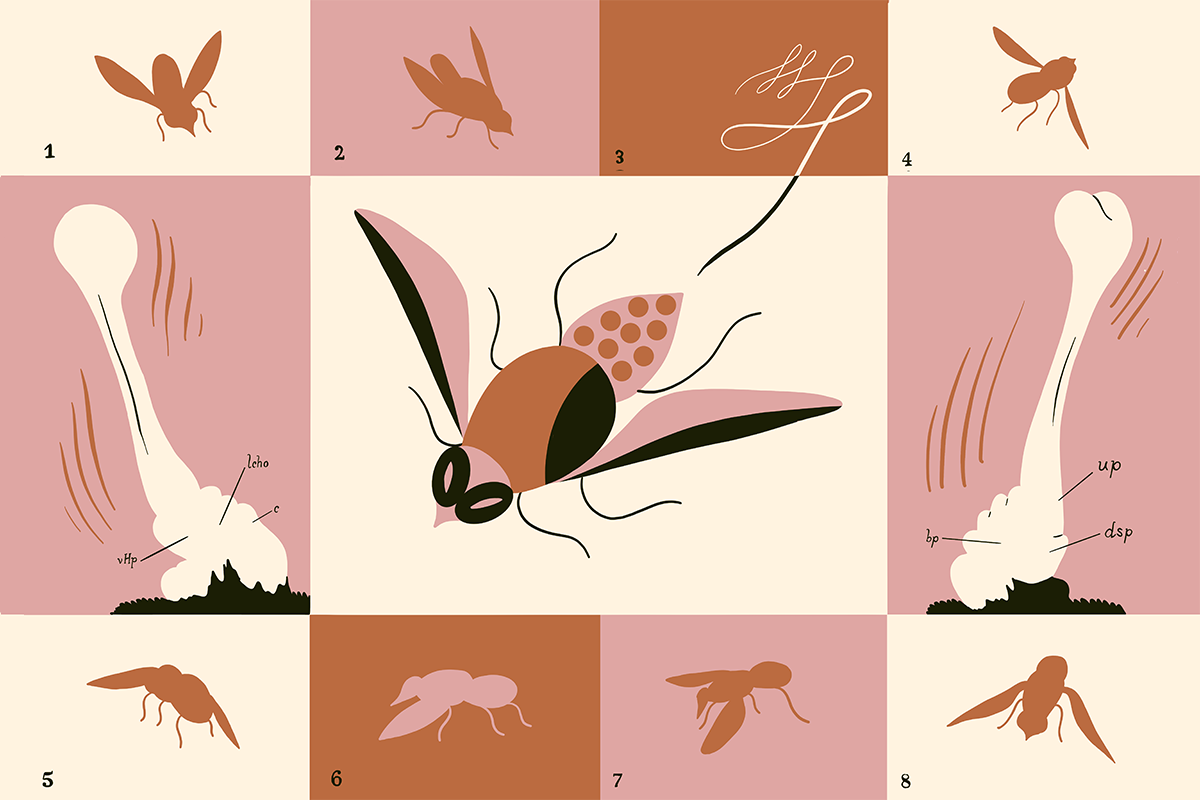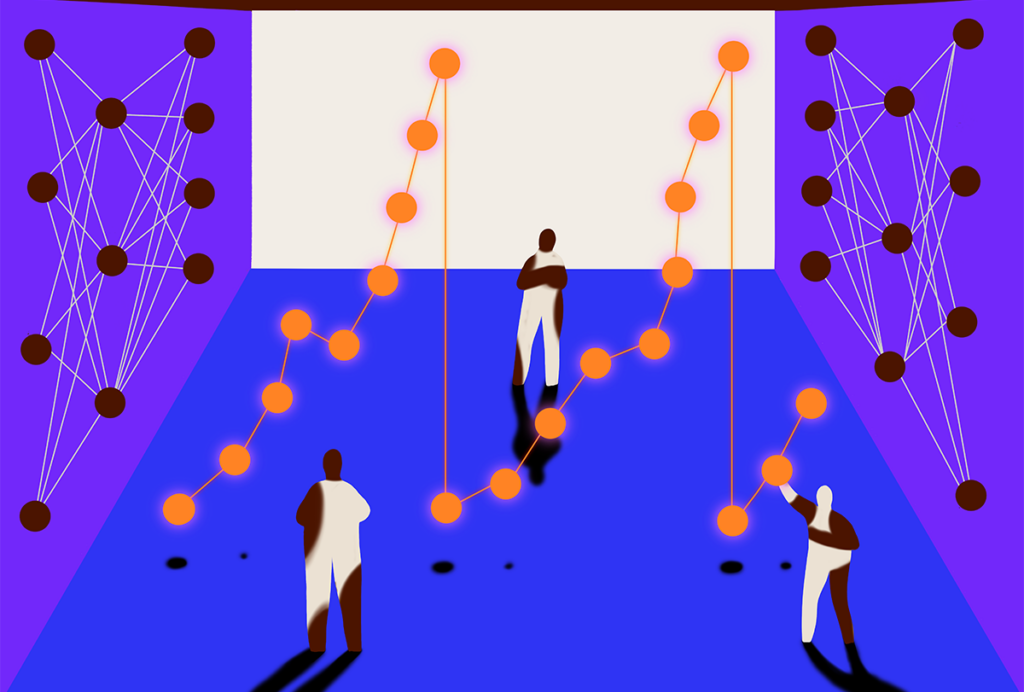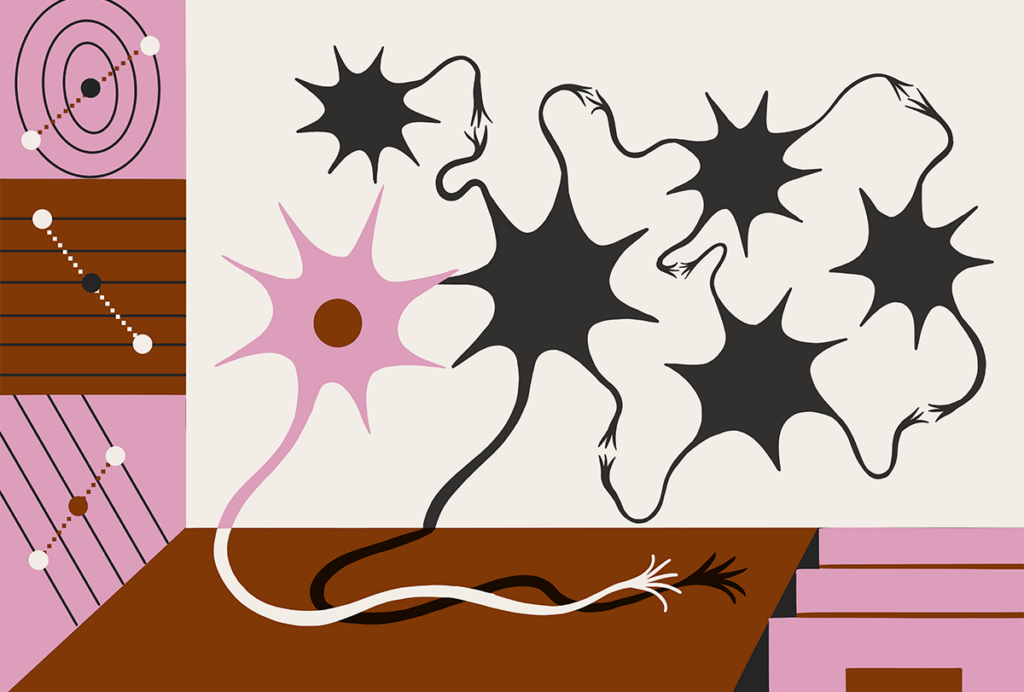
This paper changed my life: Bradley Dickerson on how a 1940s fly neuroanatomy paper influences his research to this day
This classic paper by zoologist John Pringle describes the haltere—a small structure in flies that plays a crucial role in flight control. It taught me to think about circuits and behavior as greater than the sum of their parts.
Answers have been edited for length and clarity.
What paper changed your life?: The gyroscopic mechanism of the halteres of Diptera. Pringle J.W.S. Philosophical Transactions of the Royal Society (1948)
This paper gives the first detailed anatomical, dynamical and physiological analysis of the gyroscopic mechanisms of the halteres—small club-like structures that flies have below their wings and that play a crucial role in flight control and stabilization.
Pringle thoroughly describes haltere neuroanatomy and provides classical drawings of an array of biological strain sensors embedded within them, which communicate sensory information to the rest of the fly’s nervous system. From his neuroanatomical analysis, Pringle generates hypotheses about how haltere strain sensors are involved in fundamental components of flight control, such as detecting Coriolis forces—small shifts in the bending plane of the haltere that occur during rotations—and triggering corrective reflexes of the wings and head. He goes on to try to test these hypotheses with electrophysiology recordings from a fly tethered on a gimbal system, which allowed him to rotate the fly as the haltere beat.
When did you first encounter this paper?
When I was in graduate school, I had an initial plan to look at fly antennae, which at the time were thought to act as gyroscopic sensors. But that project just didn’t work out very well. My graduate adviser, Tom Daniel at the University of Washington, pitched a project focused on halteres, which introduced me to Pringle’s work. My dissertation work ended up being focused on how insects extract information relevant for flight control from wing structures and the mechanosensors embedded within them. That project put me in conversation with this paper and the rest of haltere literature throughout my graduate career.
Why is this paper meaningful to you?
One of the things that stuck out to me about this paper is that it is very forward looking. The picture is much bigger for him than simply describing how the haltere functions for flies. There is an entire section dedicated to the evolution of the haltere, in which Pringle writes, “A mechanism as unusual and complicated as that of the haltere can hardly have come into existence suddenly in the course of evolution of the Diptera.”
I find myself thinking a lot about the evolution of biological structures in exploring in my work. I think of myself as someone who is at the interface of neuroscience and comparative biomechanics. Seeing how these fields intersect to provide a window into evolution is something that I find really compelling. The tools that we have now for studying neural activity in behaving animals, tracing neural circuitry and manipulating these circuits help me appreciate the complexity of biological structures and make me want to understand how they first developed.
I enjoy studying this problem in the haltere because it is a place where different aspects of science generally collide—the physics of the oscillating structure operating during flight and the neuroscience of the haltere’s sensors, which encode information on the physical forces and send it to the fly’s wing-steering system. It is a really unique model to look at how neural circuits function.

How did this paper change how you think about neuroscience or challenge your previous assumptions?
This paper made me think about the organism as an integrated whole and to always try to focus on the goal of a circuit or a particular behavior. When I started my own lab, I realized that my preferred way of structuring a project is to figure out different pieces and how to weave them together. Pringle’s paper is a shining example of that approach. This paper made me appreciate building a full story by tackling research questions with multiple techniques so you understand that a behavior or circuit is greater than the sum of its parts.
How did this research influence your career path?
One of the most important things Pringle described in this paper was the organization of an array of biological strain sensors in distinct fields throughout the haltere. Pringle comes up with a set of hypotheses about how these fields may be active during flight. He hypothesized that strain sensors at the base of the haltere might detect out-of-plane motions, whereas the ones towards the edge of the structure might be involved in controlling haltere plane bending during flight.
My lab’s first paper tried to address some of these hypotheses by using calcium imaging in a tethered flying fly. Contrary to his hypotheses, we found that both fields of strain sensors are continuously active in the halteres during different components of flight. This directly led us to the work we’re doing now, studying the haltere using connectomics. This approach enables us to observe the elegant wiring logic within the haltere, where specific functional groups of motor neurons control wing motion.
Is there an underappreciated aspect of the paper you think other neuroscientists should know about?
The electrophysiology recordings from the haltere nerve while the fly is on a gimbal to simulate body rotations are such clever and difficult experiments to pull off. My lab is trying to figure out how to do something similar now, almost 80 years later.
Recommended reading

This paper changed my life: Dan Goodman on a paper that reignited the field of spiking neural networks
Explore more from The Transmitter



